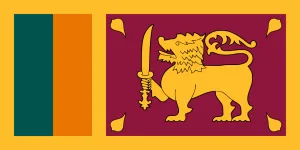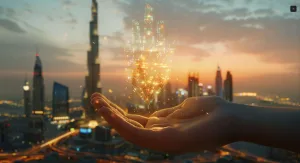Burj Khalifa: The Iconic Symbol of Dubai’s Modern Marvel
The Burj Khalifa in Dubai, standing at a staggering 828 meters (2,717 feet), is the tallest building in the world and an engineering masterpiece. Constructed between 2004 and 2010, it embodies Dubai’s ambition to transform itself into a global city. The building’s construction involved over 12,000 workers daily, cutting-edge engineering, and innovation to overcome numerous challenges. Today, the Burj Khalifa serves as an architectural and cultural icon, attracting millions of visitors and cementing Dubai’s place on the global map.
The Vision Behind the Burj Khalifa
Dubai, known for its rapid modernization, aimed to establish itself as a global hub for tourism, business, and luxury. To achieve this, Sheikh Mohammed bin Rashid Al Maktoum, the ruler of Dubai, envisioned a landmark that would be unmatched anywhere in the world. Thus, the idea for Burj Khalifa was born: a structure so tall it would symbolize Dubai’s rise from a modest desert city to a global metropolis.
Planning and Design
The Burj Khalifa was designed by Skidmore, Owings & Merrill (SOM), an American architectural and engineering firm, with Adrian Smith as the chief architect. The design took inspiration from Islamic architecture, specifically the spiraling shape of the Hymenocallis flower, which radiates from its core in three distinct sections.
This unique design was not only aesthetic but also functional, allowing the tower to minimize wind forces, a significant challenge for such a tall structure. The building’s three-part shape twists upwards, reducing the amount of wind pressure at different heights.
How the Burj Khalifa Was Built
The construction of the Burj Khalifa is a story of ambition, determination, and innovation.
Key facts about the construction:
- Construction Timeline: Construction began in January 2004, and the exterior was completed in October 2009. The tower officially opened on January 4, 2010.
- Total Workforce: Over 12,000 workers were employed on-site daily during peak construction. These workers hailed from across the globe, making the project an international effort.
- Cost: The estimated cost of construction was $1.5 billion USD.
- Materials Used: The Burj Khalifa used 330,000 cubic meters of concrete, 39,000 metric tons of steel rebar, and 103,000 square meters of glass. If the steel rebar were laid out end to end, it would stretch around a quarter of the way around the world!
Challenges Faced During Construction
Building the tallest skyscraper in the world was not without its challenges:
Wind Forces: The height of the Burj Khalifa meant that wind forces could severely impact construction. The Y-shaped design was crucial in diffusing these forces, reducing the swaying of the tower.
Worker Safety: With over 12,000 workers on-site, safety was a paramount concern. Multiple safety protocols were implemented to minimize accidents at such extreme heights.
Engineering Marvels
Building a structure of this magnitude came with unprecedented engineering challenges. Some of the most notable innovations include:
The Foundation: The Burj Khalifa’s foundation extends 50 meters (164 feet) underground and consists of 192 bored piles. This was essential to support the immense weight of the building. The piles were reinforced with high-performance concrete, designed to withstand Dubai’s desert heat.
The Concrete Formula: At such heights, traditional concrete would lose its strength due to Dubai’s extreme heat and environmental conditions. Engineers developed a specialized mix of concrete capable of handling these conditions, ensuring it would not crack or weaken.
The “Y” Shaped Design: The three-lobed footprint of the tower not only gives it aesthetic beauty but also contributes to its stability. This design allows the structure to deflect strong winds and minimize vibrations at extreme heights.
Climbing Formwork: The Burj Khalifa utilized an innovative self-climbing formwork system, which helped build the concrete core rapidly. This system “climbed” upwards with each new floor, enabling the fast-paced construction of the structure.
High-Speed Elevators: With a height of 828 meters, elevators need to be fast and reliable. The building has 57 elevators, some of which travel at speeds of up to 10 meters per second (22 mph), ensuring visitors can reach the observation decks quickly.
Temperature Management: At the top of the tower, temperatures are significantly cooler than at ground level—around 6 degrees Celsius (11 degrees Fahrenheit) lower. Engineers had to account for this in the building’s systems, ensuring it remains comfortable for occupants at all levels.
Burj Khalifa: A Symbol of Dubai
The Burj Khalifa is more than just a tall building; it has become an international symbol of Dubai’s growth and ambition. Today, the tower serves several important functions:
Tourism: The Burj Khalifa attracts over 1.87 million visitors annually, with tourists flocking to experience the observation decks, restaurants, and luxurious surroundings.
Global Icon: The tower regularly features in global events, including New Year’s Eve fireworks displays that are broadcasted worldwide, reinforcing Dubai’s status as a major player in global tourism.
Economic Impact: The Burj Khalifa has boosted real estate development in the surrounding area, especially Downtown Dubai. The area around the tower is home to high-end shopping malls, hotels, and luxury residential units.
Cultural Landmark: The Burj Khalifa also serves as a cultural icon, often lighting up in different colors to commemorate global events, holidays, and important causes, making it a statement of solidarity and inclusivity.
Conclusion:
The Burj Khalifa is an extraordinary feat of human engineering and ambition. From its conception to its construction, it overcame numerous challenges through innovative technology, teamwork, and a vision to create a symbol for Dubai’s modern identity. Today, it stands not only as the world’s tallest building but as a testament to what can be achieved when bold dreams are combined with cutting-edge engineering and determination. As Dubai continues to evolve, the Burj Khalifa remains a proud reminder of its aspirations and achievements on the world stage.





